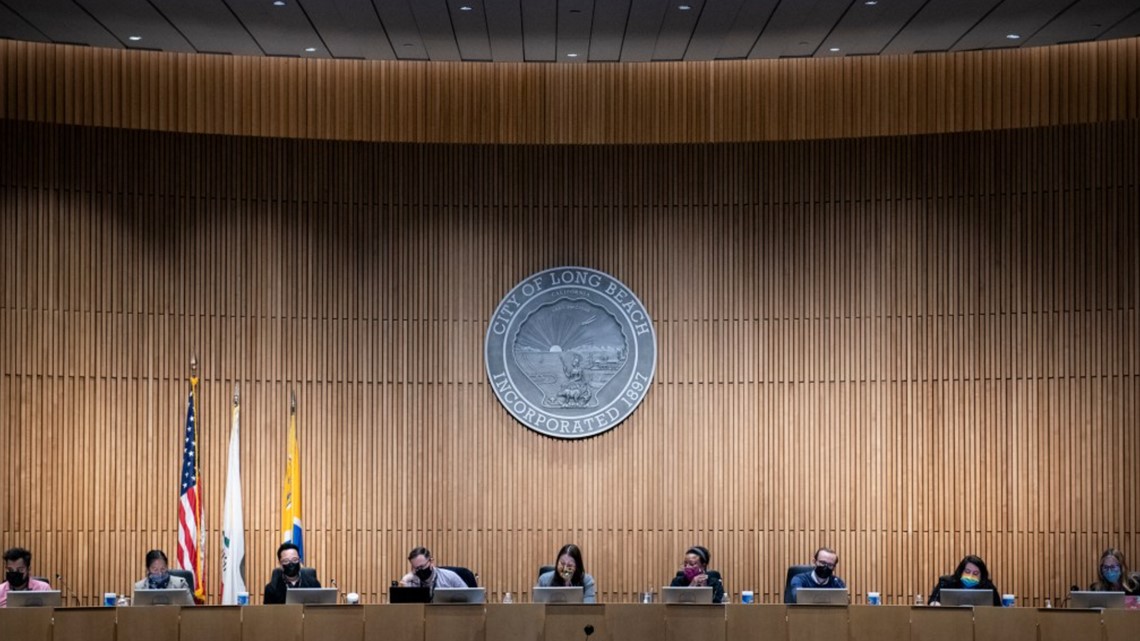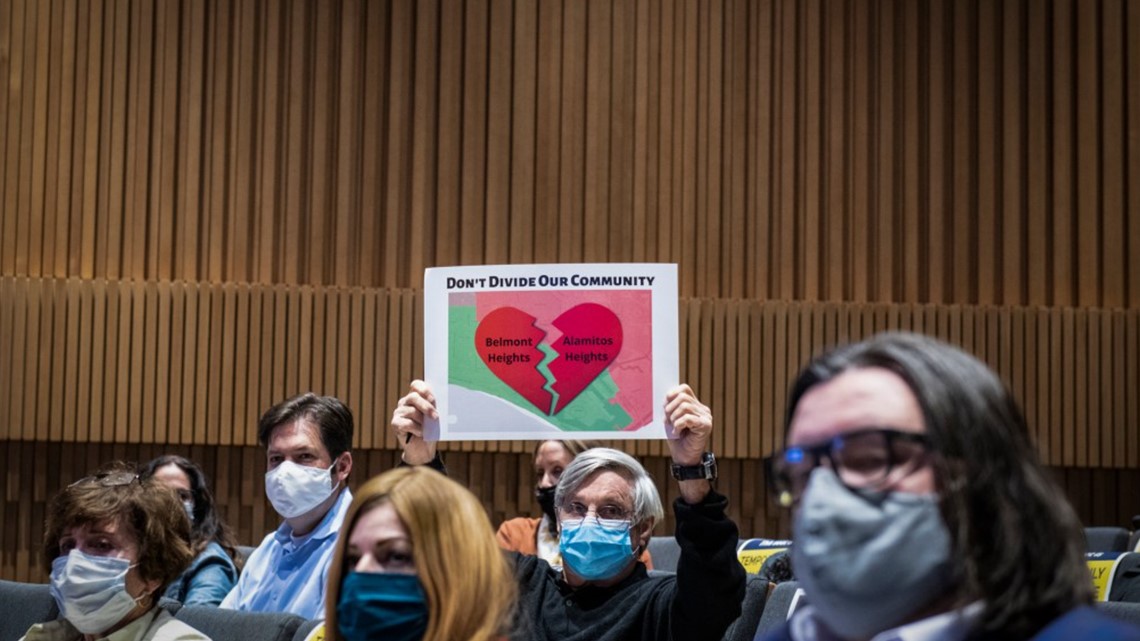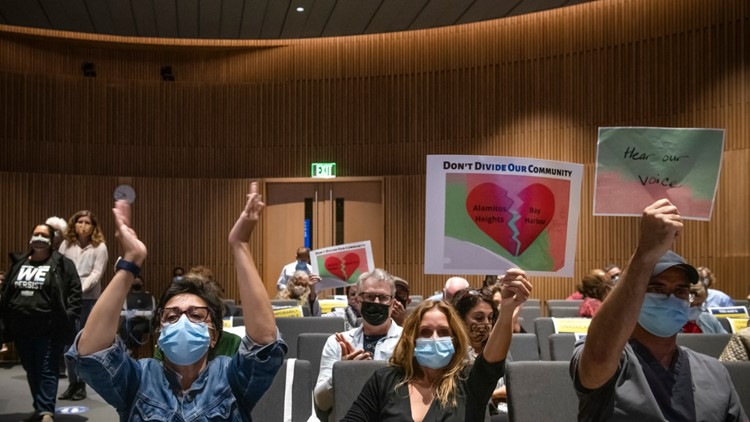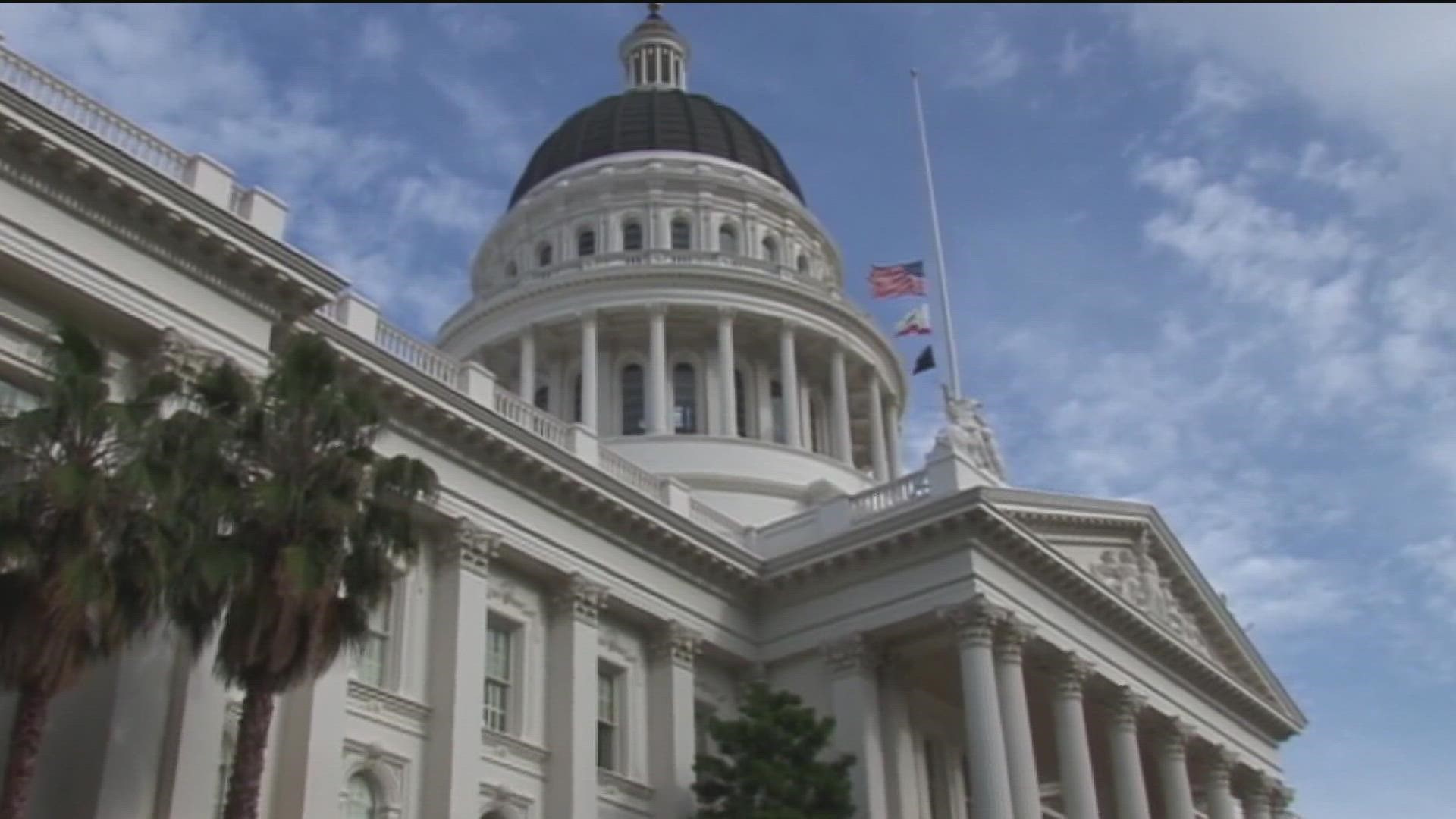CALIFORNIA, USA — This story was originally published by CalMatters.
Long Beach is home to one of the busiest ports in the U.S., a city-owned airport, the birthplace of rapper Snoop Dogg and, of course, the beach.
It’s also home to many different communities: a Cal State campus, young professionals and senior citizens downtown in need of affordable housing, a 45% Hispanic population and the largest Cambodian community outside of the Southeast Asian nation.
How these communities are grouped into new election districts could reorder the city’s priorities. For decades, the Long Beach City Council drew its own districts. But this year, redistricting is in the hands of a new independent commission, aimed at preventing council members from drawing maps to their own political advantage.
The new commission is hearing from residents, including environmental justice advocate Theral Golden, who spoke about Long Beach’s “kill zone” — also known as the “diesel death zone,” or “asthma alley.”
Golden and others argued that because the corridor north of the port is currently divided into four council districts, residents can’t be as effective in fighting port-caused pollution.
“We are looking for something that will give someone who will represent us in a manner in which we can solve some problems,” Golden told the commission in June.
California has a dozen new local independent commissions in this round of redistricting, a process that will create districts for elections from 2022 to 2030 based on the 2020 Census, the once-a-decade nationwide population count.
These new panels are coming up with districts that in some places have never been redrawn, or have not been altered significantly, despite changing populations. Taking redistricting power away from office holders could mean changes in representation and city priorities.
This local movement was preceded by a state-level independent commission created by voters in 2008. That commission is busy holding public hearings and working on new boundaries for congressional and legislative districts that, in some areas, could impact who is elected. It is getting the lion’s share of attention.
But the city and county commissions demonstrate, again, that all politics is local.
Reforming redistricting’s ‘wild, wild West’
The new local independent redistricting commissions were authorized by the 2019 Fair MAPS Act, passed by the Legislature and signed by Gov. Gavin Newsom as a way to prevent political gerrymandering.
The push in Long Beach for an independent panel came mostly from the city’s Cambodian community, whose political power was diluted when it was split into four council districts by the city council’s last redrawing in 2011.
Despite that division, in December 2020, Suely Saro, a community advocate born in a refugee camp in Thailand, became the first Cambodian American on the Long Beach City Council and one of a few in the nation.
In 2018, a group led by Saro, Equity for Cambodians, teamed up with California Common Cause, a government reform group that pushed for the Fair MAPS Act, to lobby for the new commission. Later that year, voters changed the city charter to create the panel.
It also opened the door for other communities to advocate for their needs: neighborhoods next to the airport, affordable housing advocates, and Long Beach State, as well as various ethnic groups.


The Fair MAPS Act has helped reform what used to be the “wild, wild West” in redistricting, said Jonathan Mehta Stein, executive director of California Common Cause.
“It has created a tool for local communities to demand their rightful place in the process,” he told CalMatters. “Generally speaking, independent commissions pretty consistently take community input seriously and do the work of hearing from the public in a robust way.”
That may help level the playing field for political newcomers, since elected officials, who already have the incumbency advantages of name recognition and fundraising, sometimes try to draw districts to help themselves.
New independent commissions are drawing districts in at least six counties, including Los Angeles, San Diego, San Francisco and Santa Barbara. They’re also in place in about 15 cities, Common Cause says. They include Berkeley, Long Beach, Martinez, Oakland, Sacramento and Roseville.
In January 2020, however, Newsom vetoed a bill that would have required counties with more than 400,000 residents to set up independent redistricting commissions. He said that while he agreed they were helpful in preventing gerrymandering, the 2019 law already authorized these commissions.
There are also several “hybrid” models, where advisory councils suggest maps to elected boards. But those can be ineffective, either because the boards ignore the recommendations, or because advisory council members are appointed or influenced by elected officials.
California Common Cause is reevaluating whether advisory councils make sense, Stein said.
“While we are seeing some good advisory committees that take their work seriously, we’re seeing others that are a fig leaf for politicians that want to control the process from behind the scenes,” he said. “They want to get district lines that benefit them and keep them in power, but they don’t want to be seen doing it in public.”
All politics is local
Independent commissions must follow the same rules as elected boards in drawing districts that include an equal number of people and that are geographically compact.
Districts also must comply with the Voting Rights Act — voters can’t be disenfranchised by having their community’s power diluted. When voters created the statewide commission, they called on it to consider “communities of interest.”
Those communities aren’t just different racial or ethnic groups; they can be formed around shared environmental, economic concerns or social concerns.
In San Diego, where an independent commission has existed since 1992, the LGBTQ+ community has won more representation.
Even before the independent commission, community leaders successfully advocated in 1990 for a district that would include the traditionally LGBTQ+ neighborhood of Hillcrest, plus surrounding areas with significant LGBTQ+ populations.
Starting in 1993, that district elected a line of LGBTQ+ council members — Christine Kehoe, Toni Atkins, Todd Gloria, Chris Ward and Stephen Whitburn, according to civil rights group Equality California.
Nearly all those council members went on to represent their communities as state legislators, including Atkins, who made history as the first LGBTQ+ woman to serve as Assembly speaker and the first openly LGBTQ+ Senate president pro tem, according to the group. Last year, Gloria became the first openly LGBTQ+ person to be elected mayor of San Diego.
More representation has meant leaders who fight for important community issues, such as homelessness among transgender youth or discrimination in schools, Samuel Garrett-Pate, managing director of external affairs with Equality California, told CalMatters.
“Having public commissioners and independent redistricting commissions has opened up a lot of doorways to LGBTQ+ people that may have been unable to be a voice in the room,” added Jeremy Payne, associate program director with the group, which presented proposed congressional and legislative maps to the statewide commission on Oct. 22.
Progress, not perfection
While the statewide commission has a court-ordered deadline to finish its districts by Dec. 27, in time for the June 2022 primaries, not all local panels are bound to that timeline.
That means it’s too early to judge how much difference the new local commissions are making. Also, the Fair MAPS Act only covers cities and counties, leaving out school boards, community college districts and water districts.
And there’s little that can be done in advance to stop local officials who are ignoring the 2019 law. “Part of that is the way it’s written,” said Kevin Shenkman, a Malibu-based attorney who led the charge for district-based elections throughout California. “For example, I would read the Fair MAPS Act as saying, ‘You can’t see where the incumbent lives,’ but it’s not so clear in that respect.”
Stein, of California Common Cause, said that while the redistricting act doesn’t prohibit considering incumbents, it does require first complying with all the redistricting principles, including not diluting votes.
“Manipulating the lines to keep incumbents in power is very much contrary to the spirit of the law,” he said.


One measure of success for the statewide commission — though not a requirement — is whether it helps elect officials who reflect their diverse districts. Since it started its work after the 2010 census, its record has been mixed. However, between 2012 and 2020, the commission’s new districts did largely succeed in helping to add elected officials of color in California, according to a study by the USC Schwarzenegger Institute.
And while independent commissions are meant to lessen political interests, that doesn’t mean partisanship doesn’t creep in at times.
There is also concern about a consulting firm, National Demographics Corp., that is helping draw new maps in Santa Barbara and Kings counties. The firm has been sued for being “hostile to minority voting rights.”
Redistricting can also lead to battles over key institutions — for example, the fight in Los Angeles over which city council district USC and its billions of dollars in assets should be in.
A similar fight is playing out further south, with students at the University of California San Diego pushing to shift the campus from a city council district centered on La Jolla, a higher income area, and into a heavily Asian district, the San Diego Union-Tribune reported.
Redistricting this year is further complicated by the delay of census data, which advocacy groups and experts also say undercounted people of color.
Golden, the Long Beach resident, said while the process has its shortcomings, he’s seeing more transparency and public input through the new commission:
“I’m going to say it is a moon’s leap above what we had before.”



